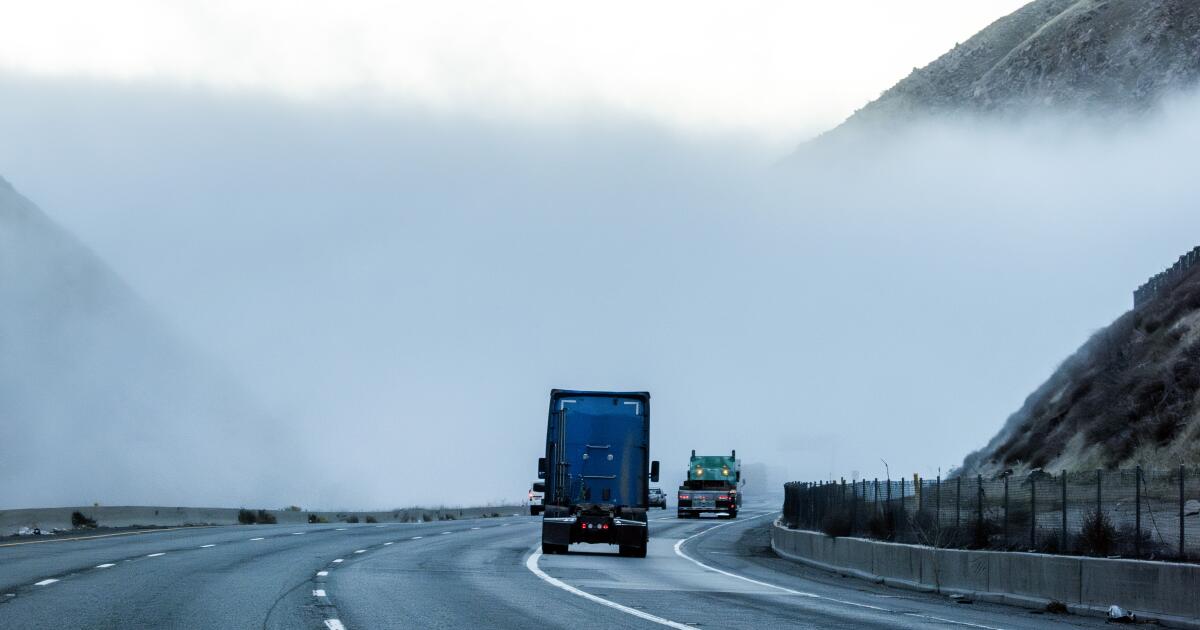Science
Do zinc products really help shorten a cold? It's hard to say

You feel a cold coming on, or maybe it’s already upon you: the telltale cough, sore throat and stuffy head. You swing by the drugstore, where a shelf full of over-the-counter products containing the mineral zinc claim to be able to shorten the duration of your symptoms.
The promise of relief is tempting. But is it one these products can make good on?
A new analysis of studies published on zinc and cold viruses concludes that there isn’t enough evidence to say whether over-the-counter zinc treatments have any effect on preventing the common cold.
For those who pop lozenges or inhale nasal sprays once a cold has come on, the available research together indicates that the products may reduce the duration of symptoms by up to two days, said Daryl Nault, an assistant professor at Maryland University of Integrative Health and first author of the paper, published Wednesday by the nonprofit organization Cochrane.
But those studies are so inconsistent in terms of the dosage, type of zinc, patient population and definition of cold symptoms that “confidence in the evidence is mostly low to very low,” the review states. “It is likely that additional studies are required before any firm conclusions can be drawn.”
In other words: Nearly 30 years after zinc lozenges first hit the market, we still can’t say for sure if these things do what they say they do.
“We aren’t saying [zinc] does” have any effect on the common cold, Nault said. “We aren’t saying it doesn’t. We’re saying we need more consistent evidence that is replicable. That’s a cornerstone of good science.”
The age of zinc cold products dawned in 1996, when researchers from the Cleveland Clinic Foundation convinced 100 clinic employees to volunteer as research subjects within 24 hours of developing a cold.
Half were given placebos, and half were given lozenges containing 13.3 milligrams of zinc from zinc gluconate every two waking hours as long as their symptoms persisted. Those receiving the zinc got better after 4.4 days on average, while the placebo group felt sick for an average of 7.6 days.
Most people consume a sufficient amount of zinc, a vital nutrient, through a regular diet. The mineral is plentiful in red meat and poultry, and present in many grains and fruits. (Oysters contain more zinc per serving than any other known food, with a single serving containing nearly 300% of the daily recommended intake.)
Scientists aren’t exactly sure how the mineral works to alleviate cold symptoms. But the idea of an over-the-counter way to shorten the misery of a common cold has proved wildly popular.
Total U.S. sales of zinc products, such as Zicam and Cold-Eeze, were $340 million in 2023, said Hannah Esper, managing editor of the trade publication Nutrition Business Journal. Demand for zinc and other supplements exploded during the COVID-19 pandemic, with sales for zinc growing 168.3% during 2020.
Based in the U.K., Cochrane uses rigorous research methods to evaluate existing scientific evidence and produce reports to help people make decisions about their health, according to its website.
For this review, the Cochrane team looked at 34 studies conducted across 13 countries that examined zinc products and the treatment or prevention of the common cold.
Drawing strong conclusions from the available research is difficult, as the studies tend to measure different things, said author Susan Wieland, an assistant professor at the University of Maryland School of Medicine and director of the Cochrane Complementary Medicine Field.
The cold “is a very common condition that is a difficult one to study,” Wieland said. It comes and goes quickly, making it difficult to enroll research subjects. Dosages and the type of zinc administered to study subjects varied widely.
“The designs of each study are different. So different dosages, different dosage forms, different patient populations, different criteria of exclusion and inclusion, different outcomes [and] definitions of cold,” said Dr. Jason Yee, an antimicrobial stewardship pharmacist at Cedars Sinai Medical Center in Los Angeles who was not involved with the review. “It’s really hard to draw the same conclusion based on different studies.”
Physicians said they weren’t surprised by the findings.
“I agree with the study. … It is consistent with my clinical experience in the hospital,” said Dr. Samia Faiz, an internal medicine specialist at UC Riverside Health. “In general, healthy people may be able to take zinc supplements if they make them feel better or if they get some comfort. They should not take these supplements if they have distaste or stomach upset.”
While over-the-counter zinc products are generally harmless to patients battling colds, said Dr. Pritish Tosh, an infectious disease physician and researcher at the Mayo Clinic, popping lozenges “shouldn’t come at the expense of doing things that really matter, which is getting plenty of rest, plenty of fluids and taking care of yourself.”
So why do we continue to fork over our cash for these things when we don’t really have more than a hunch that they work?
When a cold hits, “it’s natural for consumers to just reach for anything that may help alleviate those symptoms. But average consumers aren’t really educated on the literature and studies that are out there showing that there’s limited evidence and efficacy with these products,” Yee said.
Buying the lozenges or huffing the nasal spray can make us feel like we have more agency in a situation where we’re at the mercy of time and our immune systems, Nault said.
“Having a sense of control makes a lot of people feel better, and feel like they’re doing something,” Nault said. “Even if they aren’t.”
Times researcher Scott Wilson contributed to this report.

Science
Video: Engineer Is First Paraplegic Person in Space

new video loaded: Engineer Is First Paraplegic Person in Space
transcript
transcript
Engineer Is First Paraplegic Person in Space
A paraplegic engineer from Germany became the first wheelchair user to rocket into space. The small craft that blasted her to the edge of space was operated by Jeff Bezos’ company Blue Origin.
-
Capsule touchdown. There’s CM 7 Sarah Knights and Jake Mills. They’re going to lift Michi down into the wheelchair, and she has completed her journey to space and back.

December 21, 2025
Science
This City’s Best Winter Show Is in Its Pitch-Dark Skies

The result is a starry sky visible even from the heart of the city. Flagstaff’s Buffalo Park, just a couple miles from downtown, measures about a 4 on the Bortle scale, which quantifies the level of light pollution. (The scale goes from 1, the darkest skies possible, to 9, similar to the light-polluted night sky of, say, New York City. To see the Milky Way, the sky must be below a 5.)
Science
Social media users in the Central Valley are freaking out about unusual fog, and what might be in it

A 400-mile blanket of fog has socked in California’s Central Valley for weeks. Scientists and meteorologists say the conditions for such persistent cloud cover are ripe: an early wet season, cold temperatures and a stable, unmoving high pressure system.
But take a stroll through X, Instagram or TikTok, and you’ll see not everyone is so sanguine.
People are reporting that the fog has a strange consistency and that it’s nefariously littered with black and white particles that don’t seem normal. They’re calling it “mysterious” and underscoring the name “radiation” fog, which is the scientific descriptor for such natural fog events — not an indication that they carry radioactive material.
An X user with the handle Wall Street Apes posted a video of a man who said he is from Northern California drawing his finger along fog condensate on the grill of his truck. His finger comes up covered in white.
“What is this s— right here?” the man says as the camera zooms in on his finger. “There’s something in the fog that I can’t explain … Check y’all … y’all crazy … What’s going on? They got asbestos in there.”
Another user, @wesleybrennan87, posted a photo of two airplane contrails crisscrossing the sky through a break in the fog.
“For anyone following the dense Tule (Radiation) fog in the California Valley, it lifted for a moment today, just to see they’ve been pretty active over our heads …” the user posted.
Scientists confirm there is stuff in the fog. But what it is and where it comes from, they say, is disappointingly mundane.
The Central Valley is known to have some of the worst air pollution in the country.
And “fog is highly susceptible to pollutants,” said Peter Weiss-Penzias, a fog researcher at UC Santa Cruz.
Fog “droplets have a lot of surface area and are suspended in the air for quite a long time — days or weeks even — so during that time the water droplets can absorb a disproportionate quantity of gasses and particles, which are otherwise known as pollutants,” he said.
He said while he hasn’t done any analyses of the Central Valley fog during this latest event, it’s not hard to imagine what could be lurking in the droplets.
“It could be a whole alphabet soup of different things. With all the agriculture in this area, industry, automobiles, wood smoke, there’s a whole bunch” of contenders, Weiss-Penzias said.
Reports of the fog becoming a gelatinous goo when left to sit are also not entirely surprising, he said, considering all the airborne biological material — fungal spores, nutrients and algae — floating around that can also adhere to the Velcro-like drops of water.
He said the good news is that while the primary route of exposure for people of this material is inhalation, the fog droplets are relatively big. That means when they are breathed in, they won’t go too deep into the lungs — not like the particulate matter we inhale during sunny, dry days. That stuff can get way down into lung tissue.
The bigger concern is ingestion, as the fog covers plants or open water cisterns, he said.
So make sure you’re washing your vegetables, and anything you leave outside that you might nosh on later.
Dennis Baldocchi, a UC Berkeley fog researcher, agreed with Weiss-Penzias’ assessment, and said the storm system predicted to move in this weekend will likely push the fog out and free the valley of its chilly, dirty shawl.
But, if a high pressure system returns in the coming weeks, he wouldn’t be surprised to see the region encased in fog once again.
-

 Iowa1 week ago
Iowa1 week agoAddy Brown motivated to step up in Audi Crooks’ absence vs. UNI
-

 Iowa1 week ago
Iowa1 week agoHow much snow did Iowa get? See Iowa’s latest snowfall totals
-

 Maine6 days ago
Maine6 days agoElementary-aged student killed in school bus crash in southern Maine
-

 Maryland1 week ago
Maryland1 week agoFrigid temperatures to start the week in Maryland
-

 South Dakota1 week ago
South Dakota1 week agoNature: Snow in South Dakota
-

 New Mexico5 days ago
New Mexico5 days agoFamily clarifies why they believe missing New Mexico man is dead
-

 Detroit, MI7 days ago
Detroit, MI7 days ago‘Love being a pedo’: Metro Detroit doctor, attorney, therapist accused in web of child porn chats
-

 Education1 week ago
Education1 week agoOpinion | America’s Military Needs a Culture Shift



















